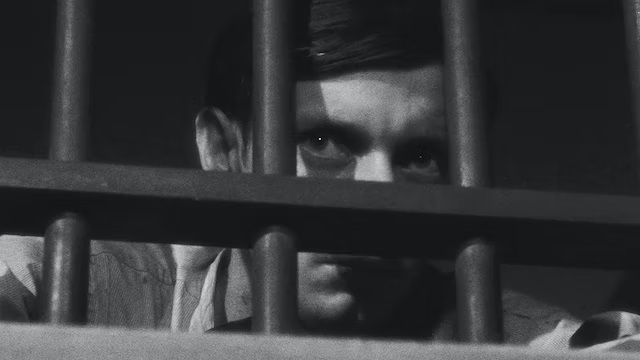
In her essay “Spiritual Style in the Films of Robert Bresson,” Susan Sontag argues that “All of Bresson’s films have a common theme: the meaning of confinement and liberty.” A Man Escaped develops this theme more explicitly than in any other of his works, making it the best entry point into Bresson’s oeuvre.
The film details the imprisonment of a Free French rebel in World War II. Typical of Bresson’s style, it contains lengthy sections of wordless action—the prisoner Fontaine plotting escape alone in his cell, leaving his cell for a meal, or waiting in line to dump his waste bucket. Bresson punctuates these scenes with evocative sound; the intense focus on physical and mundane tasks compels the viewer to look within the characters to understand.
But there Bresson places a second roadblock. In A Man Escaped, as in all of his films after Les Dames du Boulogne, the actors do not emote. Blank looks and unemotional responses populate the characters in the prison. Bresson resists the temptation to allow his characters to explain their deepest feelings and motivations. Such psychological speculation is simply out of the question.
By making these kinds of stylistic choices Bresson drives the viewer to grapple with the spiritual realities of the narrative. In other words, as the main story focuses on the mundane, leaving the characters opaque, Bresson invites the viewer into spiritual contemplation. Rather than dictating particular thoughts or feelings to the audience, A Man Escaped opens a space for the viewer to interact and engage with the profound mysteries of human life, of our desire for freedom, and of the presence of God amid our struggles.
—John Adair
Directed by: Robert Bresson
Arts & Faith Lists:
2011 Top 100 — #68